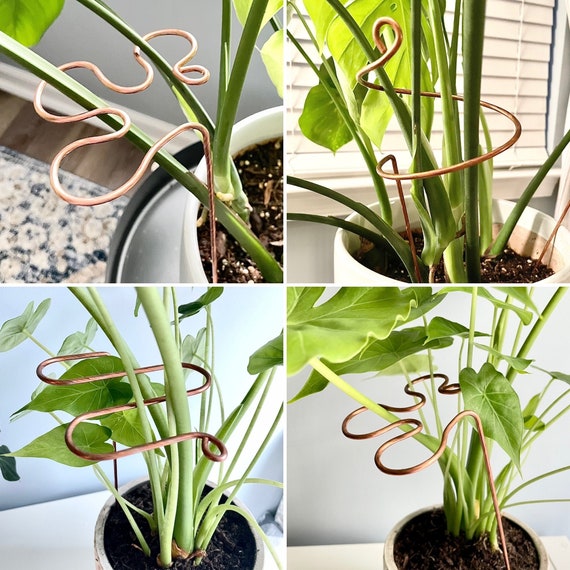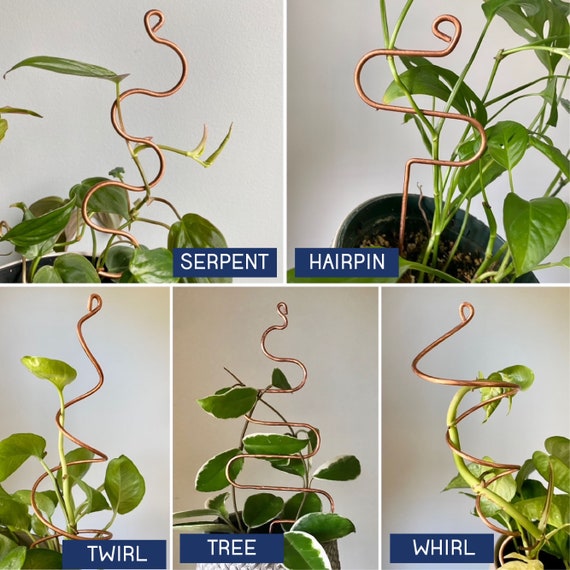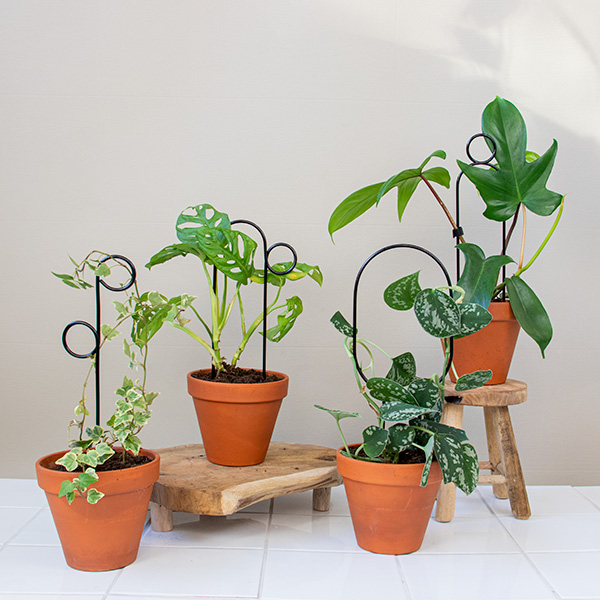Houseplants bring a touch of nature into our homes, but sometimes they need a little help to thrive. Enter decorative house plant stakes! These charming accessories not only support your plants but also add character to your indoor garden. As an avid plant enthusiast, I’ve had my fair share of experiences with plant stakes, and I’m excited to share everything I’ve learned. In this comprehensive guide, we’ll explore the various types, benefits, and creative uses of decorative house plant stakes, ensuring your plants receive the love and support they deserve.
What Are Decorative House Plant Stakes?
Decorative house plant stakes are support structures that help plants grow upright and healthy. Typically made from wood, metal, or plastic, these stakes come in various designs and sizes, allowing you to choose the perfect match for your plant and decor style. They serve functional and aesthetic purposes, offering stability to delicate stems while enhancing your home’s ambiance.
The Importance of Using Plant Stakes
Why should you consider using decorative stakes for your houseplants? Here are a few reasons:

- Support: They provide the necessary support for plants that are top-heavy or have weak stems.
- Growth Direction: Stakes guide plants in the desired growth direction, promoting a healthier shape.
- Prevention of Breakage: Using stakes reduces the risk of seedlings breaking under their weight.
- Enhanced Aesthetics: Decorative stakes can complement or even become a focal point in your plant display.
Types of Decorative House Plant Stakes

Choosing the right stake is crucial for the health of your plants. Here are some popular types of decorative house plant stakes:
1. Wooden Plant Stakes
Wooden stakes are sturdy and blend well with natural decor. They come in various sizes and can be painted or left natural for a rustic look.

2. Metal Plant Stakes
For a modern touch, consider metal stakes. They are durable, often designed with intricate patterns, and can lend an industrial vibe to your plant display.
3. Plastic Plant Stakes
Lightweight and usually more affordable, plastic stakes come in a plethora of colors and designs. They are perfect for indoor use and great for beginners.

4. Decorative Garden Stakes
These stakes often feature unique designs or themes, such as butterflies, animals, or geometric shapes, serving as both support and art for your plants.
5. Weighted Plant Stakes
Weighted stakes are great for particularly tall plants. They provide extra stability and are usually made from composite materials to ensure durability.

Benefits of Using Decorative Plant Stakes
Now that we’ve covered the types of plant stakes, let’s dive into the benefits of using decorative plant stakes in your homes:

- Enhanced Growth: By supporting stems and leaves, stakes ensure that plants have enough light and resources to thrive.
- Improved Aesthetics: They contribute to the overall design of a room; stylish stakes can complement your decor.
- Customization: With various materials and designs, you can personalize your plant display to reflect your taste.
- Easy Maintenance: Stakes help with the organization of plants, making watering and grooming easier.
How to Choose the Right Plant Stakes

With so many options available, choosing the right decorative house plant stakes can be overwhelming. Here are some factors to consider:
1. Plant Type
Different plants require different support levels. For instance, a small succulent may need less support than a tall monstera. Always consider the size and growth habit of your plant.
2. Material
Choose a stake material that complements your home. For example, wooden stakes work well with bohemian decor, while metal stakes suit modern aesthetics.
3. Height and Width
The stake should be taller than the plant and sturdy enough to support its weight. Consider the plant’s potential size when making your selection.
4. Design
Pick a design that adds to your home’s aesthetics. Whether minimalist or intricate, ensure the stake enhances your plant display.
How to Use Decorative Plant Stakes
Utilizing decorative plant stakes effectively is crucial for plant health. Here’s a step-by-step guide on how to use them:
Step 1: Choose the Right Time
Introduce stakes when your plant is young or has just been repotted. This ensures your plant can adapt to support as it grows.
Step 2: Insert the Stake
Gently insert the stake into the soil, ensuring it’s close to the plant but not too close to damage the roots. The stake should be about 1-2 inches away from the stem.
Step 3: Secure the Plant
Use soft ties or plant clips to attach the stem to the stake. Ensure the ties are not too tight to avoid damaging the plant.
Step 4: Monitor Growth
Regularly check the stake to ensure it remains secure and provide additional support as the plant grows.
Creative Ways to Incorporate Decorative Stakes
Decorative stakes can do more than just support plants; they can also elevate your home’s design! Here are some creative ideas:
1. Use in Centerpieces
Incorporate stakes into floral arrangements for added height and drama. Choose stakes that match the theme of your decor.
2. Create a Vertical Garden
Combine multiple plant stakes to create a stunning vertical garden. This is a great way to save space and showcase various plants.
3. Themed Displays
Choose stakes that align with your design theme, whether rustic, modern, or whimsical. Create a cohesive look by matching the stakes to your other decor elements.
4. Seasonal Decor
Customize stakes for different seasons or holidays. For example, use stakes with autumn motifs in the fall or floral designs in spring.
5. Educational Displays
Use stakes to label plants in your collection. This can be both educational for guests and a stylish way to display plant names or care instructions.
Comparison Table of Plant Stakes
| Type of Stake | Material | Height Options | Average Price | Best For |
|---|---|---|---|---|
| Wooden Stakes | Wood | 6″-60″ | $2-$20 | Medium to tall plants |
| Metal Stakes | Metal | 12″-48″ | $5-$30 | Decorative purposes |
| Plastic Stakes | Plastic | 6″-36″ | $1-$10 | Small houseplants |
| Decorative Garden Stakes | Varies | 10″-48″ | $3-$25 | All plant types |
| Weighted Stakes | Composite | 12″-60″ | $5-$20 | Tall plants |
Pros and Cons of Decorative House Plant Stakes
Pros
- Support for Growth: Helps weak or top-heavy plants stay upright.
- Aesthetic Enhancement: Decorative designs add character and beauty.
- Customization: Wide variety of options to match your decor.
- Durability: Many stakes are designed to last for years.
Cons
- Cost: Decorative stakes can be more expensive than standard options.
- Maintenance: Some materials may require upkeep to prevent deterioration.
- Overuse: Too many stakes can clutter the plant display.
Frequently Asked Questions
What materials are the best for decorative plant stakes?
The choice of material depends on your personal preference and the plants you’re growing. Wooden stakes are great for a natural look, while metal stakes provide durability and style.
Can I make my own decorative plant stakes?
Absolutely! You can easily create your own stakes using materials like bamboo skewers, dowels, or repurposed items. Get creative with paints and embellishments to personalize them!
How do I know if my plant needs a stake?
If your plant appears to be leaning, has weak stems, or is too tall for its pot, it’s likely time for a stake. Observing your plant’s growth patterns can also indicate the need for support.
Are decorative stakes suitable for outdoor plants?
While many decorative stakes are designed for indoor use, some materials are suitable for outdoor plants. Ensure they are weather-resistant if placed outdoors.
What’s the best way to clean my plant stakes?
Cleaning depends on the material. Generally, a damp cloth for metal and plastic stakes works well, while wooden stakes might require gentle scrubbing with soap and water.
Conclusion
Decorative house plant stakes are an essential accessory for any houseplant lover. They not only provide the necessary support for your plants but also add a touch of personality to your indoor garden. By choosing the right type, understanding how to use them effectively, and incorporating creative ideas into your decor, you can create a stunning, thriving plant display that reflects your unique style.
With the insights shared in this guide, I hope you feel inspired and equipped to elevate your greenery with decorative house plant stakes. Happy planting!